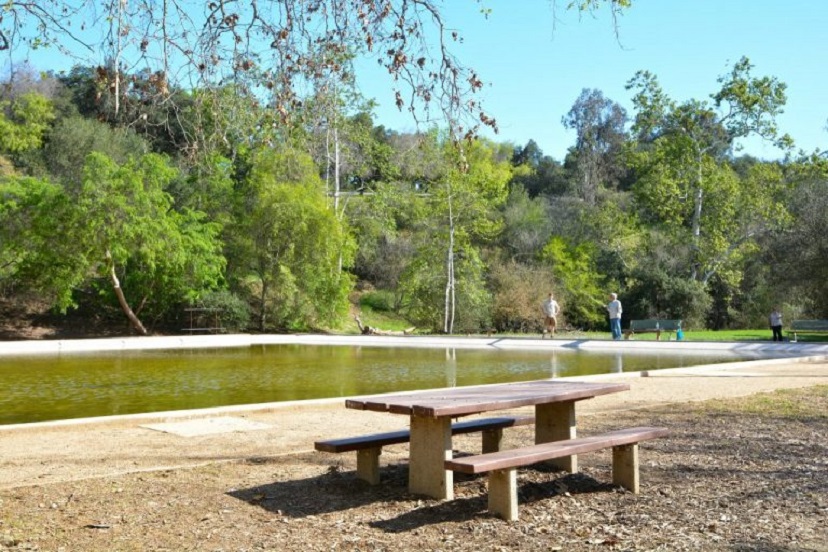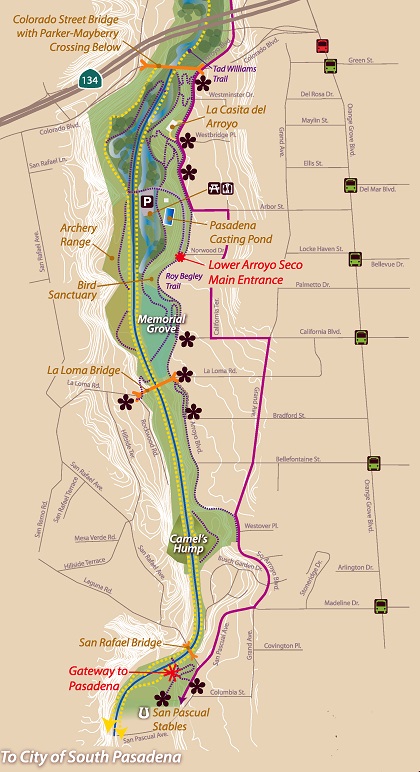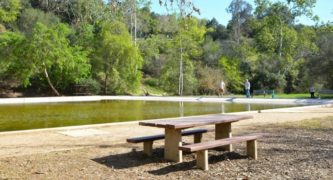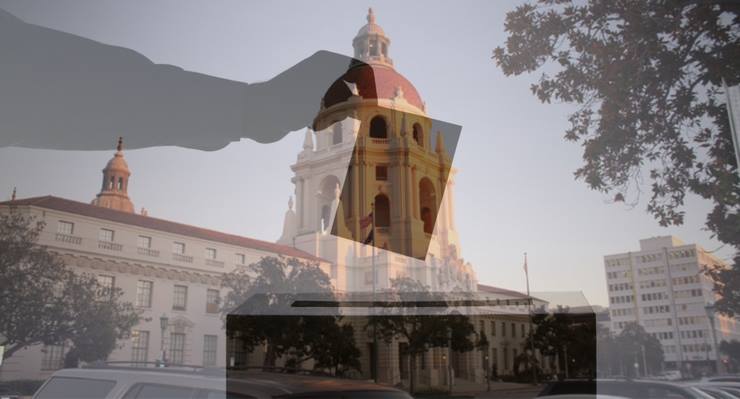
The Lower Arroyo in Pasadena has long been one of the most loved spots in the Arroyo Seco. It is Pasadena’s only dedicated nature preserve and a wonderful place to take a walk and enjoy nature.

When the historic La Loma Bridge was rehabilitated a couple of years ago and transformed into the John K. Van de Kamp Bridge, the construction project did not include landscaping or environmental improvements in the area. Now Pasadena Public Works Department has prepared a program to take care of that. The official description states: “This project provides habitat restoration within the vicinity of the Van de Kamp Bridge. The project will enhance, conserve, and restore the native plant community through the removal of non-native plant species and the planting of native trees and understory.”
Some local residents have expressed concern about the removal of non-native plants in the Van de Kamp restoration program. They wonder whether it is really necessary. And why so many, they ask.
The Lower Arroyo Seco is a nature preserve as defined by the Arroyo Seco Public Lands Ordinance, which reflects the city’s policy to protect and enhance the natural character of the Arroyo. “Planting shall be limited to native plants,” the ordinance states, “that may be planted with material appropriate to the Arroyo Seco and the semi-arid South California climate.”
The Van de Kamp restoration program is not a landscaping program for a standard urban park. It is a habitat restoration program that is intended to protect nature and upgrade the quality of plants there. Habitat restoration is a science that consists of grouping appropriate trees and shrubs in zones that will enhance the natural character and functions of special environmental regions. It has tremendous benefits for the ecosystem health of the area affected, for the birds, wildlife and people.
Grant programs that fund important projects like this generally specify appropriate native habitat in environmentally important areas like the Lower Arroyo because that is good science and important for the long-term ecosystem health and sustainability of the area.
The plant list for the Van de Kamp restoration program has been professionally prepared by habitat experts. The trees and shrubs to be removed are not part of the historic character of the Arroyo and do not contribute positively to the ecosystem health of the Lower Arroyo. They are like weeds in a garden. Invasive and inappropriate trees and shrubs like this interfere with the re-establishment of native habitat. They often create dead zones where native plants cannot live and can introduce exotic pests, bugs and diseases that will harm the habitat, the natural insects and even wildlife.
The number of trees and plants involved is another important concern. The critics note that more than 100 plants will be removed, but most of these are weeds and non-native seedlings, not mature trees. According to the plans, twenty-two mature trees will be removed, which is quite appropriate in an area as large as the restoration zone.
The areas to be replanted in the Lower Arroyo near the Van de Kamp bridge are mostly barren areas that have been degraded and neglected over the years and need some care.
There is now significant momentum for the restoration of a living stream in the Lower Arroyo, a long-held dream of many Pasadenans. Los Angeles County is pushing the US Army Corps of Engineers to complete their long-delayed ecosystem restoration study of the Arroyo Seco, including the Lower Arroyo. The state-sponsored Upper Los Angeles Rivers and Tributaries Working Group recently enthusiastically endorsed stream restoration in the Lower Arroyo. Pasadena will lose credibility with resource agencies and funders if it does not implement carefully-designed habitat restoration programs.
Imagine a living stream in the Arroyo once again. Until Devil’s Gate Dam was built one hundred years ago, steelhead trout made their way back and forth from the mountains to the ocean through that stream in the Lower Arroyo. Then, in the post-World War II period, the stream was diverted into a sterile concrete channel that thwarts habitat, wildlife and water conservation and pollutes the ocean. But we are not condemned to the past. We can reclaim the natural heritage of the Arroyo Seco. That’s a goal that will enrich us and future generations.
Tim Brick is the Managing Director of the Arroyo Seco Foundation.














 0 comments
0 comments


